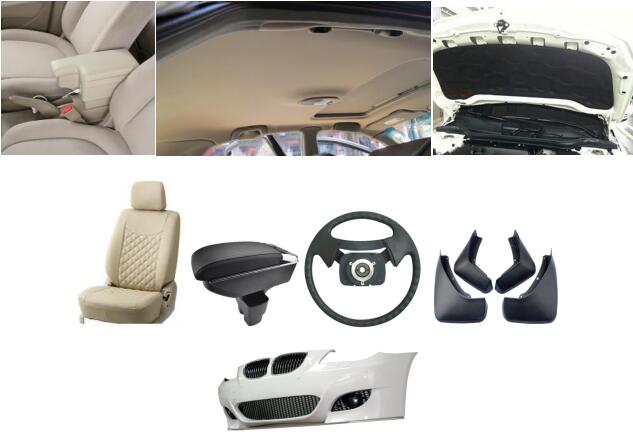Polyurethane (PU) materials, once silent players in the industrial field, are now shining brightly under the push of technology. In various industries such as automotive, construction, footwear, and furniture, PU materials have firmly established their importance. However, a new wave of technology is propelling further development in the PU materials field, and innovation is transforming production methods, offering limitless possibilities for various industries. This article will delve into the latest technological trends in PU materials and how to fully utilize these innovative advantages in the production process to lead a production revolution.
The history of PU materials can be traced back to the 1930s, but it’s only in recent decades that their application areas have gradually expanded, becoming a crucial component of today’s industrial landscape. Their outstanding versatility, durability, and diverse properties have led to widespread applications in automotive interiors, thermal insulation materials for construction, footwear comfort, and more.
As the call for environmental protection and sustainable development grows louder, a green revolution is sweeping through the PU materials field. The development of biodegradable PU materials offers new possibilities to replace traditional plastics, contributing to ecological conservation. Simultaneously, the emergence of smart PU materials, such as self-healing coatings and temperature-sensitive fibers, imparts products with more intelligent and personalized attributes.
In the field of molecular design, new technologies are steering the evolution of PU materials. Precise molecular construction revolutionizes aspects like mechanical performance and chemical resistance. The application of nanotechnology allows PU materials to incorporate multiple functionalities, such as conductivity and antibacterial properties, expanding their range of applications.
With technological progress and continuous innovation in PU material technology, this versatile high-polymer material is leading the manufacturing industry’s production revolution. In the production process, new PU technologies bring a series of advantages, from enhanced production efficiency to quality assurance, providing immense value to businesses.
a. Production Process Optimization: New PU technology has brought profound optimization to production processes. In the past, PU manufacturing might involve complex production steps and time-consuming processes. However, with the introduction of new technology, many traditional production steps can be simplified or even omitted, thus accelerating the production cycle. For instance, new reaction processes and catalyst designs can synthesize PU materials in shorter times, significantly reducing production cycles and increasing efficiency.
b. Improved Resource Utilization Efficiency: The application of new PU technology also effectively enhances the utilization efficiency of raw materials. Traditional PU manufacturing might generate a significant amount of waste, while the introduction of new technology can minimize waste production to the maximum extent. Additionally, new material designs and production processes can achieve lower energy consumption, further reducing production costs.
c. Enhanced Product Quality Consistency: Through new PU technology, producers can more precisely control the composition and properties of materials. This means that product quality can be more accurately controlled during the production process, reducing variations between batches. This is particularly crucial for industries that demand high quality and consistency, such as medical devices and automotive manufacturing.
d. Introduction of Automation and Digitization: The application of new PU technology is also driving the development of production automation and digitization. Modern PU production lines can achieve higher levels of automation, from raw material input to finished product output, all controlled through automation, reducing the risks and errors associated with human operation. Additionally, digital monitoring systems can real-time monitor key parameters during the production process, enabling producers to react and adjust more swiftly.
e. Development of Innovative Products: The introduction of new PU technology also brings greater possibilities for the development of innovative products. New material designs and performance enhancements can give rise to entirely new PU products, meeting the constantly changing market demands. By combining new technologies, enterprises can consistently innovate and introduce new surprises to the market.
Overall, the advantages of new PU technology in the production process not only enhance efficiency and quality but also provide businesses with a competitive edge. However, to fully leverage these advantages, enterprises need to actively collaborate with technology suppliers and research institutions, stay updated on the latest technological advancements, continuously experiment and innovate, and strive for sustained development and progress.
Using medical devices as an example, the application of smart PU materials is driving a revolution in the medical field. Through smart materials, timed drug release and monitoring become possible, offering patients an improved treatment experience. In the automotive sector, the application of new PU technology makes car seats more ergonomic, providing higher comfort for passengers.
To fully harness the advantages of new PU technology, enterprises need to continuously innovate and learn. Actively seeking collaborations with research institutions, tracking the latest technological developments, conducting experiments, and driving progress are key to achieving technological innovation.
The future of PU materials holds boundless possibilities, and innovative technologies are leading an era of production revolution. Whether contributing to environmental sustainability or propelling the development of intelligent industries, the evolution of PU materials will impact the global industrial landscape.
Post time: Aug-14-2023



